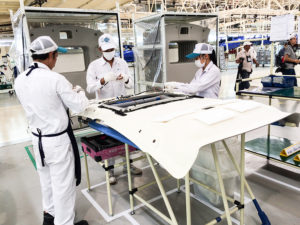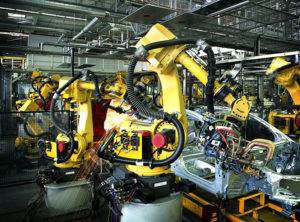Manufacturing in the United States traces its roots to Oliver Evans. In 1785, he developed a system of buckets, conveyors, and other parts to build the first automated flour mill. We’ve been busy reinventing ever since. Henry Ford’s assembly line in the early 1900s revolutionized manufacturing, increasing productivity and decreasing overhead.
If Ford was alive now, he might not recognize the industry. It’s changed quite a bit since the first Model T rolled off the line. Today’s manufacturers face challenges unimaginable in Ford’s days.
Modern changes
 Offshoring – Designed for access to cheaper labor abroad, boomed over the last two decades of the 20th century. According to a 2010 study, U.S. multinational manufacturers moved many jobs out of the country between 1982 and 1999. “Affiliate foreign employment” as a share of the total American manufacturing labor force rose from 30% to nearly 44% during that period.
Offshoring – Designed for access to cheaper labor abroad, boomed over the last two decades of the 20th century. According to a 2010 study, U.S. multinational manufacturers moved many jobs out of the country between 1982 and 1999. “Affiliate foreign employment” as a share of the total American manufacturing labor force rose from 30% to nearly 44% during that period.
Onshoring — Over the past several years, though, some are returning jobs in a groundswell. Led by the Reshoring Initiative, company leaders have re-examined the total cost to offshore jobs. Increases in overseas labor and shipping costs, longer supply chain lines, and poorer quality control tarnish offshoring allure. Indeed, it’s now cheaper for many to manufacture in the United States rather than overseas.
Increased productivity — Increased U.S. manufacturing productivity is another reshoring incentive. The U.S. nonfarm labor productivity index has steadily increased since 2014.
Holistic approaches — Business leaders are embracing practices that provide holistic business approaches to their manufacturing systems. This can increase productivity as barriers between different manufacturing functions come down. Practices such as Lean and Six Sigma encourage function and information cross-pollination among traditionally separate arenas. As a result, companies are optimized and employees are attaining their full potentials as culture shifts to adapt more collaborative approaches and fewer silos with buckets of weak and strong business areas.
 Technology and automation — Technology has also been a significant source of change. The Industrial Internet of Things (IIoT) provides the necessary tools to capture and analyze large data quantities manufacturers require to remain productive, profitable, and proactive in their market spaces. IIoT data analytics produce predictive analyses, problem isolation, machine efficiency, as well as increased yield and throughput.
Technology and automation — Technology has also been a significant source of change. The Industrial Internet of Things (IIoT) provides the necessary tools to capture and analyze large data quantities manufacturers require to remain productive, profitable, and proactive in their market spaces. IIoT data analytics produce predictive analyses, problem isolation, machine efficiency, as well as increased yield and throughput.
Automation leads to increased productivity. Robots drive employment growth by enabling company leaders to win new orders. But there’s another advantage: Automation improves the work environment by making dull and dangerous jobs obsolete.
The path forward
Manufacturing in the U.S. is changing — not dying — and change is a constant. Deloitte analysts predict manufacturing will continue to change rapidly as manufacturers adapt to consumers’ ever-shifting needs. Succeeding in this new landscape requires “understanding the factors driving change in your specific sector; focusing on activities that convey a structural advantage; leveraging the skills and capabilities of third parties; fundamentally rethinking business models; and identifying influence points.”
From flour mills to biomedicine and offshoring to reshoring, American manufacturing survives — and even thrives — in a constantly changing environment.
